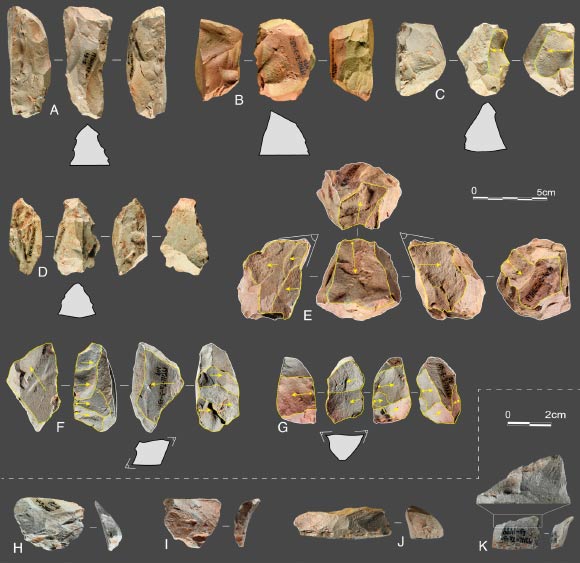While the Middle Paleolithic period is viewed as a dynamic time in European and African history, it is commonly considered a static period in East Asia. The discovery of a sophisticated set of stone tools at the Longtan site in southwest China, dated to 50,000 to 60,000 years ago, challenges that perception.
The Middle Paleolithic occurred about 300,000 to 40,000 years ago and is considered a crucial time in human evolution.
The period is associated with the origin and evolution of modern humans in Africa.
In Eurasia, it is linked to the development of several archaic human groups such as Neanderthals and Denisovans.
However, there is a widely held belief that development in China was sluggish during most of the Paleolithic.
“Our discovery challenges the current understanding of human history and technological development in East Asia,” said University of Wollongong’s Professor Bo Li.
“This discovery challenges the long-established prevailing theory among archaeologists that tools in Middle Paleolithic China were relatively simple and unchanged.”
Professor Li and colleagues unearthed a rich collection of stone tools at the Longtan archaeological site in China’s Yunnan province.
The tools revealed a complete Quina technological system, including cores used to produce large and thick flakes, which were further shaped and maintained as scrapers.
Quina industry is one of the most representative tool-making strategies developed in the Middle Paleolithic, around 300,000-40,000 years ago.
It is characterised by steep, scaled retouch on thick flakes, producing robust scrapers with heavy edge modification, often associated with Neanderthals, and represents a strategy developed as a response to the open forest-grassland environments and cool/dry climates during the Marine Isotopic Stage 4, about 57,000 to 71,000 years ago.
The Quina technological system was found in Western and Southern Europe in this period but was not believed to have been present in…
Read the full article here

